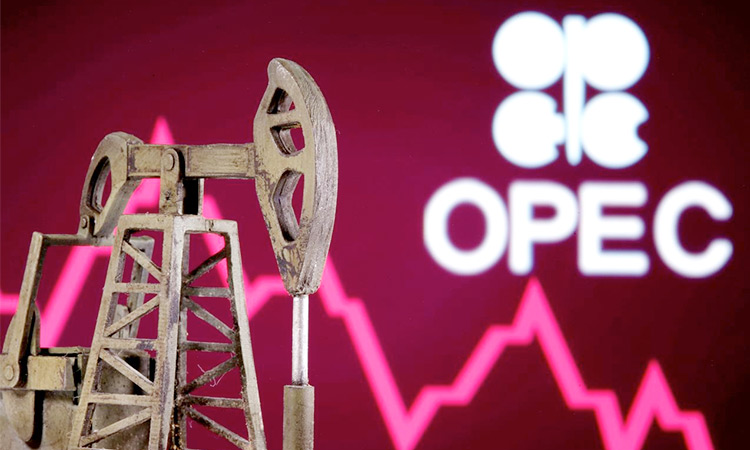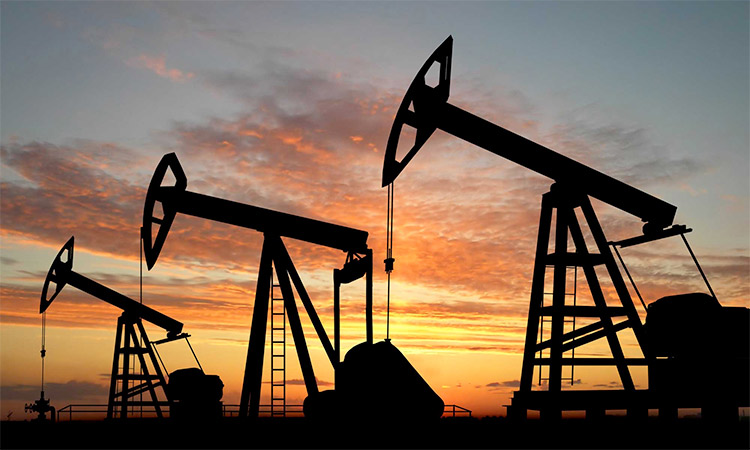
The Opec and allied producing countries have confirmed plans to restore 2.1 million barrels of crude per day of oil output, balancing fears that continuing COVID-19 outbreaks in some countries will sap demand against the rising need for energy in recovering economies around the globe.
Energy ministers made the decision during an online meeting on Tuesday. Saudi Energy Minister Prince Abdulaziz bin Salman said recent market developments proved that the decision to gradually increase production, originally made in April and reconfirmed on Tuesday, was “the right decision.” He said that there were still “clouds on the horizon” regarding the recovery and demand for energy.
The group decided to stay the course decided at earlier meetings to raise production by 2.1 million barrels per day from May to July. The group planned to add back 350,000 barrels per day in June and 440,000 barrels per day in July. At the same time, Saudi Arabia is gradually adding back 1 million barrels in voluntary cuts it made above and beyond its group commitment.
The combined Opec Plus format of members led by Saudi Arabia and non-members, chief among them Russia, faces concerns that renewed COVID-19 outbreaks in countries such as India, a major oil consumer, will hurt global demand and weigh on prices. Oil producing countries made drastic cuts to support prices during the worst of the pandemic slowdown in 2020 and must now judge how much additional oil the market needs as producers slowly add more production.
The economic recovery in the US, Europe and Asia is expected to increase energy demand in the second half of the year as people travel more and use more fuel, whether it’s gasoline or jet fuel. The US driving season began over Memorial Day weekend and increasing numbers of Americans have been vaccinated, leaving people feeling freer to travel and take longer trips by car.
On Tuesday the price of benchmark US crude rose 3.6% to $68.66. Brent crude, the European standard, traded 2.7% higher at $71.17.
An additional factor complicating market estimates is the possible return to the market of more Iranian oil, depending on the outcome of talks over Iran’s nuclear program.

Oil prices have risen more than 30% since the start of the year. That has meant higher costs for motorists in the US, where crude makes up about half the price of a gallon of gasoline. Holiday travelers paid the highest gas prices since 2014 at a national average of $3.03 per gallon, $1.12 more than last year. Prices in the western states were even higher; Californians paid $4.20 per gallon.
Brent up $2, hits highest since March on demand prospects. Oil prices rose on Tuesday, with Brent hitting above $71 and trading at its highest since March, on expectations for growing fuel demand during the summer driving season in the United States as Opec+ agreed to boost output.
Prices were also boosted by Chinese data showing that the country’s factory activity grew at its fastest this year in May.
Brent crude futures for August gained $2.01, or 2.9%, to $71.33 a barrel by 1401 GMT, its highest intra-day price since March 8.
U.S. West Texas Intermediate crude for July was at $68.85. That was up $2.53, or 3.8%, from Friday’s close, with no settlement price for Monday because of a U.S. public holiday.
“Oil prices today are rising as the market is getting increasingly confident that demand is reaching the end of the recovery tunnel, with strong usage indications coming globally, from the United States to China,” said Louise Dickson, oil markets analyst at Rystad Energy.
Tracking business GasBuddy said Sunday’s U.S. gasoline demand, coinciding with the Memorial Day weekend, jumped 9.6% above the average of the previous four Sundays. That was the highest Sunday demand since the summer of 2019.
The price gains were capped, though, by expectations that more output will hit the market.
The Organization of the Petroleum Exporting Countries and its allies, collectively known as Opec+, also agreed to continue a slow easing of supply curbs in their meeting, an OPEC source said, as producers balance an expected demand recovery against a possible increase in Iranian output.
“The bull-recipe for the oil market is still intact: reviving demand, muted U.S. shale oil response together with controlled and restrictive supply from Opec+, thus resulting in further declines in inventories and thus yet higher oil prices,” said Bjarne Schieldrop, chief commodity analyst at SEB in Oslo.
Opec+ decided in April to return 2.1 million barrels per day (bpd) of supply to the market from May to July, anticipating rising global demand despite the very high number of coronavirus cases in India, the world’s third-largest oil consumer.
European stocks hit fresh record highs on Tuesday, as strong metal and oil prices boosted shares of big commodity companies, and data showed euro zone manufacturing activity expanded at a record pace in May.
The pan-European STOXX 600 index gained 0.8% in the first trading session of June, with UK’s blue-chip index rising 0.8% after a holiday on Monday.
The German DAX jumped 1.0% to a new record high, while France’s CAC 40 added 0.7%.
IHS Markit’s final reading of euro zone’s factory activity rose to 63.1 in May, above an initial 62.8 “flash” estimate and the highest since the survey began in June 1997.












